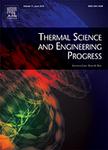版权所有:内蒙古大学图书馆 技术提供:维普资讯• 智图
内蒙古自治区呼和浩特市赛罕区大学西街235号 邮编: 010021

作者机构:NIMS Univ Sch Comp & Artificial Intelligence Jaipur Rajasthan India Suresh Gyan Vihar Univ Comp Sci & Engn Jaipur Rajasthan India Saveetha Engn Coll Dept Biomed Engn Chennai India Aditya Univ Dept Elect & Commun Engn Surampalem India Koneru Lakshmaiah Educ Fdn Dept Comp Sci & Engn Guntur 522302 Andhra Pradesh India SRKR Engn Coll Dept ECE Bhimavaram Andhra Pradesh India
出 版 物:《THERMAL SCIENCE AND ENGINEERING PROGRESS》 (Therm. Sci. Eng. Prog.)
年 卷 期:2025年第59卷
核心收录:
主 题:Artificial Intelligence Multiphysics Modelling Fiber-Reinforced Composites Genetic Algorithms Neural Networks Reduced Strain Closure Model Optimization Composite Manufacturing
摘 要:This research presents a new Multiphysics artificial intelligence scheme for predicting fiber orientation distribution (FOD) and mechanical properties of Fibre Reinforced Polymers (FRPs). It employs a genetic algorithm for optimization and an artificial neural network for the improved performance of the Reduced Strain Closure (RSC) model. Further, parallel genetic algorithms were used for the optimization of the RSC coefficient values combined with the unique multi-layered artificial neural network with 1-4-8-12-1 topology to predict the mechanical properties. The methodology was tested with high-resolution X-ray micro-computed tomography (mu CT) data and an extensive range of mechanical tests with specimens in 0 degrees, 45 degrees and 90 degrees orientations. Overall, the optimized model showed a higher prediction accuracy, reducing the mean FOD error prediction by 51.4 %, and improving the R2 values from 0.74 to 0.95. The accuracy of the mechanical property predictions was overall better, with the prediction errors for the elastic modulus decreasing by 71.3 % and tensile strength accuracy increasing by 59 % for all orientations. The parallel processing implemented for the developed framework, the framework exhibited 85 % parallel efficiency and 3.2 x Speedup through GPU used. This integrated approach offers a sound research strategy for determining fiber direction and mechanical property estimation in composite product fabrication.